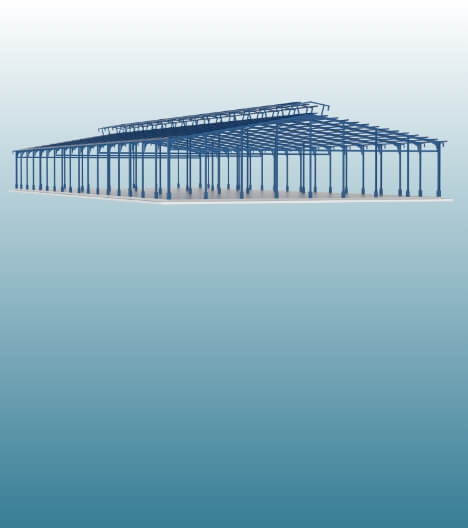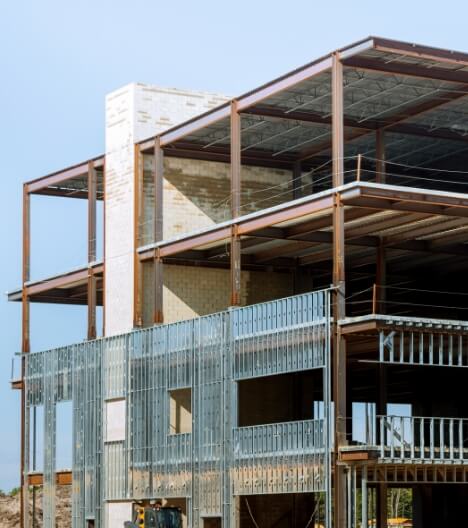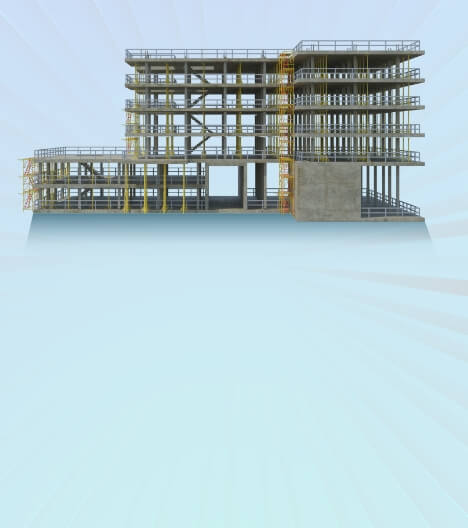 Him Darji
Him DarjiEnhancing Safety with BIM Services in Structural Projects
 Him Darji
Him Darji
Send Us Your Requirement
The world of construction is constantly evolving, with new technologies and innovations introduced that affect efficiency, accuracy, and safety. The AEC industry has evolved with changing approaches, working methods, and specifications. As a matter of fact, the cutting-edge digital approach to construction projects has transcended traditional blueprints and sketches. The revolutionary approach came with BIM technology, offering a holistic view to the infrastructure project. As we all know, any construction project consists of various stages where keen attention to detail, accuracy, and efficiency are paramount to every project.
With the inception of BIM services, many complex and time-consuming processes have become simplified, keeping in mind the accuracy and efficiency between the disciplines. Moreover, BIM offers many more advantages in different stages of construction. Enhancing safety and risk mitigation is one of the prime perks of using BIM in every stage of construction.
At its core, BIM functions as a comprehensive digital database, storing essential information, from materials to every discipline component detail. However, BIM offers safety benefits within that, ensuring the stage is error-free with no risk while the groundwork. On the contrary, among all the different construction phases, structural construction is one of the most important and risky, especially at the groundwork stage. Building information modeling paved the way for ease in the process; it is also a border concept with many other services.
Enhance the Safety of Structural Project with BIM Technology
Get a Quote
Among many, structural BIM services have gradually gained popularity as a transforming tool for architects and engineers. They ensure that structural work is done with the utmost safety and without any risk. With structural BIM, the digital approach to the design plan has increased accuracy and reduced scope errors, resulting in enhanced safety.
Additionally, safety is one of the primary concerns of every construction professional. With that in mind, it shapes every project facet, including planning, execution, and management. Not to forget, advancements in technology have resulted in a game changer in architecture and construction, especially with BIM as a digital toolset.
Integrating the same technology in the structural phase of the construction project not only enhances project delivery but also ensures safety precautions for the professionals working on the site. Explore how BIM makes safety a prime motto in complex structural projects. Before that, let’s overview structural BIM services and their benefits.
Overview of Structural BIM Services & Role in Safety Enhancement
Any infrastructure built today has a beautiful exterior as well as an interior. Outcasting building shapes, excellent interiors, marvelous architecture, and more. However, these all are in vain because the facility isn’t strong from the inside. Any building, simple or complex, must have a solid and robust structural framework; with a solid backbone, infrastructure is of use. This implies accurately curating and keenly performing the structural BIM services task.
In fact, the building’s structure acts as a skeleton, which should be solid enough to bear the load and withstand environmental or natural calamities. This is where the importance of structural BIM comes into light, as it includes information that affects the building’s structure, such as foundation, floors, roof types, material quality, beams, walls, columns, and much more.
Moreover, it goes beyond the measurement and geometry of the components as safety and minimizing the risk factors are the prime concerns. When working on the construction site, it is essential to ensure laborers’ safety and infrastructure. Not only this, but structural BIM offers a variety of benefits in the projects, such as;
Advantages of BIM in Structural Projects
Enhanced Collaboration
Improve Scheduling
Construction Safety
Facility Management
Clash Detection and Resolution
Better Decision Making
Energy Efficiency
Better Safety and Precautions
Leveraging the power of structural 3D modeling services for infrastructure’s functional characteristics and keeping safety paramount. As a matter of fact, structural BIM services emerged as a powerful and transformative tool in the AEC industry to ensure a solid framework and bearing loading of environmental factors. Although integrated with groundbreaking BIM technology, the framework structure can be assured of safety, providing the groundwork is done with utmost safety.
Integrated with building information modeling, BIM empowers project professionals to quickly identify errors, risks, or clashes and proactively address the safety precautions that result in minimum accidents or injuries at groundwork. This is why keen attention to detail and accuracy at every level is essential in the designing phase. The detailed prototype of the structure allows early identification, which can be catered with safety precautions during the planning and designing stage.
Additionally, this reduces the chances of cost overrun, less material wastage, and proactive safety assurance for laborers at the construction site. Moreover, safety is a non-negotiable aspect in the architecture and construction sector, and implementing BIM services helps AEC professionals assess risky factors and ensure safety hazards in terms of human resources and long-term facility management.
With that, the BIM 3D model enables accurate and enhanced planning, coordination, communication, informed decision-making, and efficiency in design, resulting in safer worksites, reduced accidents, on-time delivery, and overall project success. The following are some of the construction aspects that BIM caters to to ensure the safety of structural projects.
- Enhanced Planning and Design
- Early Clash Detection
- Improved Coordination and Communication
- Virtual Construction and Simulation
- Site Safety Planning
- Accuracy in Design and Analysis
- Mitigating Project Risk Factors
- Regulatory Compliance and Documentation
- Informed Decision Making
- Enhanced Facility Management
These are some aspects where the implementation of BIM technology can result in site safety being a critical outcome. Above all, building information modeling can ensure the construction project is accurate as the 3D BIM model underwent the quality check assurance. In structural projects, the foremost important thing is a solid framework for the building.
However, the integration of BIM can help enhance structural projects and make them safer for worksites. BIM structural services also entail many other factors and benefits that result in improved performance and the project’s overall success. As the framework strength and safety of workers are quite important, structural BIM induces these qualities in the modern architecture realm.
Ending Note
The realm of architecture and construction entails complex designs that are catered to with modern technology today. Although BIM resolves many processes and complexities, AEC professionals must be experts in utilizing the power of building information modeling. Therefore, UniquesCADD is a lead BIM service provider, assuring quality, enhanced, and accurate results per the client’s requirement.






